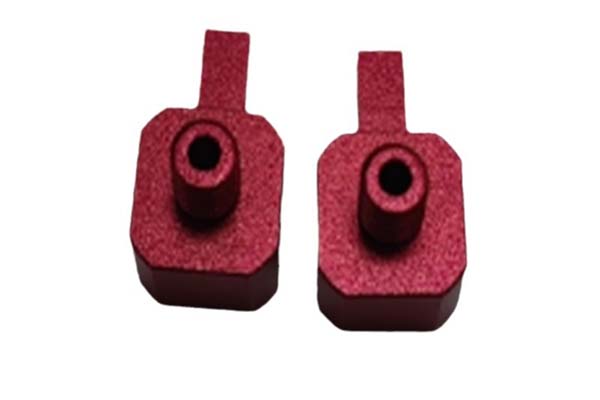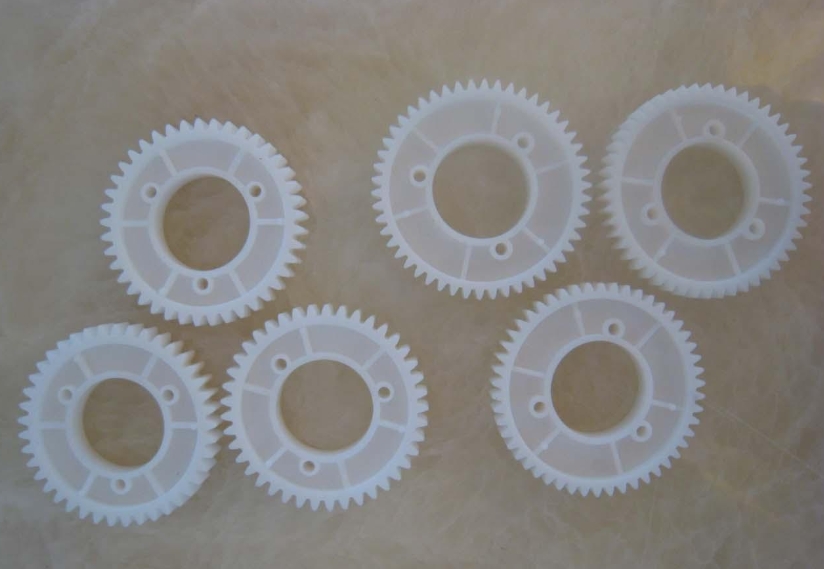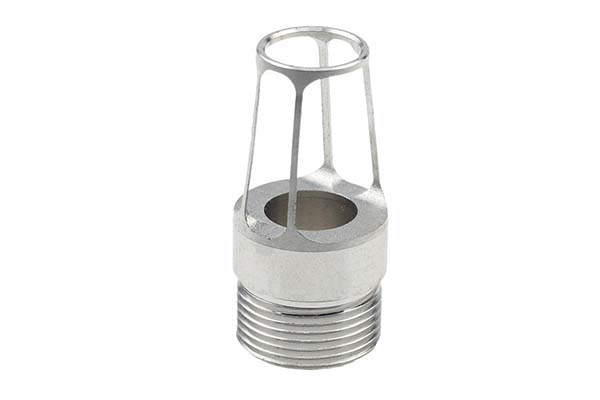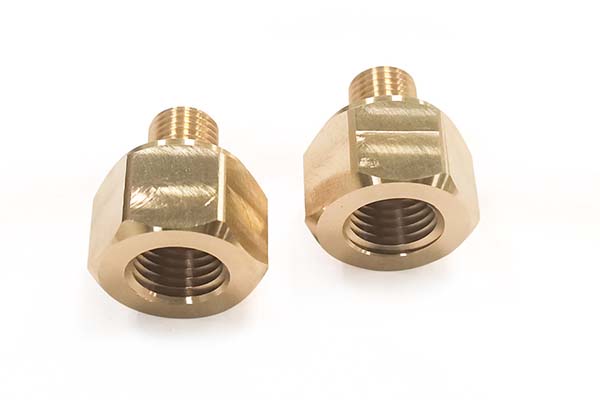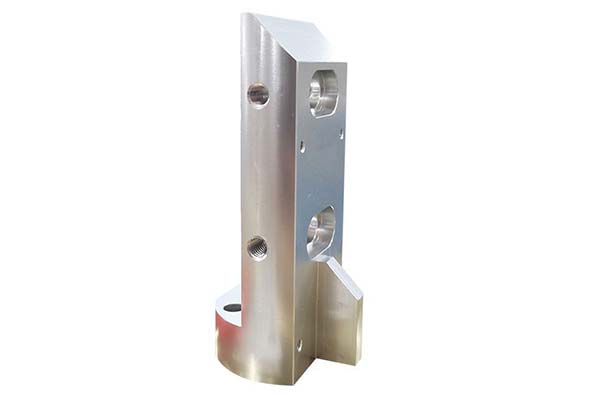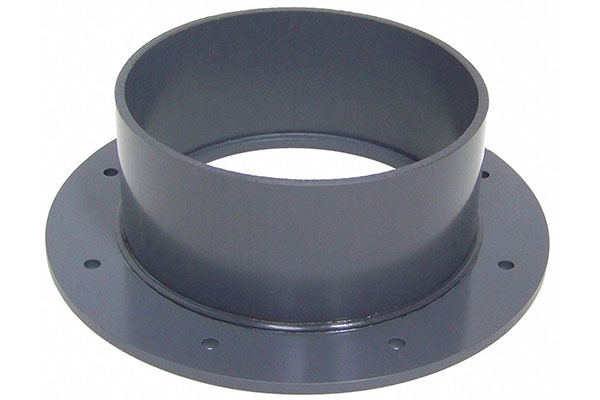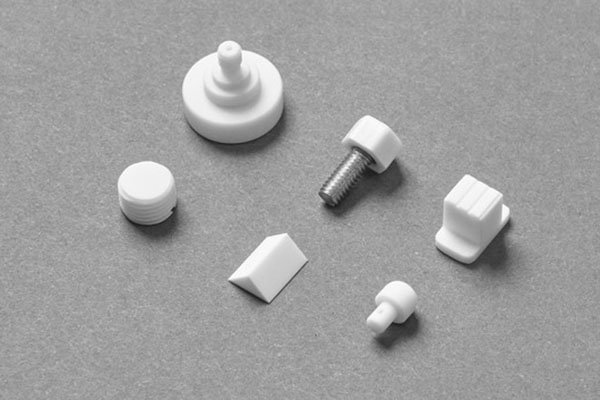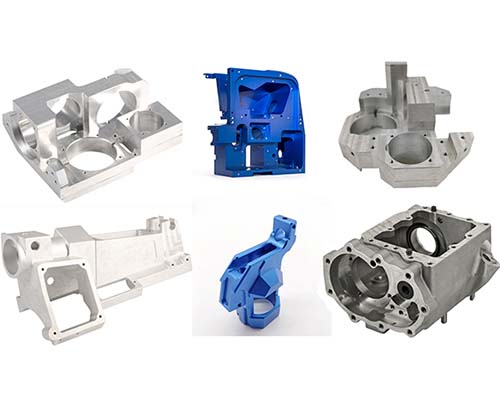1. Introduction
In the vast realm of manufacturing, milling stands as a fundamental and indispensable process. It serves as the cornerstone for the creation of countless products that we encounter in our daily lives, from the tiniest components in our electronic devices to the large - scale parts in industrial machinery.
Milling is defined as a machining process where a rotating multi - tooth cutter (the milling cutter) is used to remove material from a workpiece. This process can create a wide variety of shapes and features, making it suitable for a broad spectrum of applications. It is a process that has evolved over time, from simple manual operations to highly automated and precise computer - controlled machining.
Yigu Technology aims to explore in - depth the key advantages of milling in manufacturing. By understanding these advantages, manufacturers can make more informed decisions about whether milling is the right process for their specific production needs. Whether it's a small - scale workshop looking to create custom - made parts or a large - scale factory aiming for high - volume production, the insights into milling's advantages can help optimize the manufacturing process, improve product quality, and increase overall productivity.
2. High Precision and Accuracy
2.1 The Capability of CNC Milling Machines
One of the most remarkable aspects of milling, especially when using Computer Numerical Control (CNC) milling machines, is its extraordinary high precision and accuracy. CNC milling machines are equipped with advanced computer - controlled systems that can precisely control the movement of the milling cutter. This allows for the production of parts with extremely tight tolerances.
Typically, Yigu Technology modern CNC milling machines can achieve tolerances as low as ±0.001 inches (±0.0254 mm) or even better in some high - end models. For example, in the aerospace industry, components such as turbine blades are crucial for the performance of aircraft engines. These blades require complex geometries and extremely tight tolerances. A CNC milling machine can accurately carve out the intricate shapes of turbine blades, ensuring that each blade has the correct airfoil shape, precise dimensions, and a smooth surface finish. This high level of precision is essential because even the slightest deviation in the shape or dimensions of a turbine blade can lead to inefficiencies in the engine, reduced fuel efficiency, and potentially safety issues.
2.2 Meeting Stringent Industry Standards
Milling plays a vital role in meeting the stringent industry standards that exist across various sectors. In the aerospace industry, components must meet strict safety and performance requirements. According to industry regulations, aerospace parts often need to have dimensional accuracies within a few thousandths of an inch. Milling processes, especially those carried out by high - end CNC machines, can consistently achieve these tight tolerances. A study by the Aerospace Industries Association showed that over 95% of precision - machined aerospace components produced through milling processes met or exceeded the required tolerance specifications.
3. Versatility and Customization
3.1 Handling Various Materials
Milling is highly versatile in terms of the materials it can process. It can handle a wide range of materials, each with its own unique characteristics and advantages during the milling process.
Metals: Metals are among the most commonly milled materials. Steel, for example, is widely used in the manufacturing of machinery parts, automotive components, and construction materials. Mild steel is relatively easy to mill, allowing for efficient material removal. High - speed steel (HSS) milling cutters are often used for milling mild steel, as they can withstand the heat generated during the cutting process. Stainless steel, on the other hand, has higher strength and corrosion - resistance properties. Milling stainless steel requires carbide - tipped milling cutters due to its toughness. These carbide cutters can handle the higher cutting forces and heat associated with milling stainless steel, ensuring accurate and smooth machining.
Aluminum is another popular Yigu Technology metal for milling, especially in the aerospace and automotive industries. It has a low density, high thermal conductivity, and good corrosion - resistance. Aluminum can be milled at high speeds, which significantly increases the machining efficiency. For instance, in the production of aircraft wings, large - scale aluminum sheets are milled into complex shapes with precise dimensions. The use of high - speed milling techniques on aluminum can achieve a smooth surface finish and tight tolerances, which is crucial for the aerodynamic performance of the aircraft.
Plastics: Plastics are also easily milled, and they find applications in various industries such as consumer goods, electronics, and medical devices. Acrylic, a common plastic, can be milled to create clear and precise parts for display cases, signage, and optical components. The low melting point of acrylic requires careful control of the milling parameters, such as spindle speed and feed rate, to prevent melting and distortion of the material. Polycarbonate, with its high impact - resistance, is often milled for applications like safety goggles, electronic enclosures, and automotive lighting components. Milling polycarbonate can produce parts with excellent dimensional accuracy and surface quality.
Composites: Composite materials, which are made up of two or more different materials, are becoming increasingly popular in manufacturing. Carbon fiber - reinforced composites, for example, are used in high - performance applications such as aerospace, sports equipment, and automotive racing. Milling carbon fiber composites requires specialized tools and techniques. Diamond - coated milling cutters are often used because of their high hardness and wear - resistance. The milling process needs to be carefully controlled to avoid delamination and fiber pull - out, ensuring the integrity and strength of the composite part.
3.2 Creating Complex Geometries
One of the remarkable features of milling is its ability to create complex geometries with relative ease. In modern manufacturing, many components require intricate shapes and structures to perform their functions effectively.
In the mold and die manufacturing industry, molds for plastic injection molding often have complex cavities and cores. Milling can accurately create these intricate shapes. A mold for a smartphone case, for instance, may have a complex inner structure to accommodate the components of the phone and a smooth outer surface for a sleek appearance. Milling machines can precisely carve out the details of the mold, ensuring that the plastic parts produced from the mold have the correct dimensions and surface finish.
3.3 Customization for Specific Applications
Milling enables manufacturers to achieve high - level customization to meet the specific needs of different projects. In the medical industry, dental implants are customized to fit each patient's unique dental anatomy. A patient's dental impressions are first taken, and then a milling machine is used to create a personalized dental implant from a biocompatible material such as titanium. The milling process can precisely replicate the shape and size required for the implant, ensuring a perfect fit in the patient's mouth.
4. Cost - Effectiveness and Efficiency
4.1 Cost - effectiveness for Small to Medium Batch Sizes
Milling is highly cost - effective, especially when dealing with small to medium batch sizes. One of the key factors contributing to its cost - effectiveness is the relatively low setup time required for milling operations. For example, in a small - scale manufacturing workshop that produces custom - made mechanical parts, when using a Yigu Technology CNC milling machine, the setup time for a new batch of parts can be as short as 30 minutes to 1 hour. This includes tasks such as tool changing, workpiece clamping, and programming the machine. In contrast, other manufacturing processes like injection molding, which is more suitable for high - volume production, may have a setup time of several hours or even a full day, especially when changing molds.
4.2 Efficiency in Production
The efficiency of milling is another significant advantage. Milling machines, especially CNC - controlled ones, can operate continuously for long periods. Modern CNC milling machines are designed with high - quality spindle systems and robust mechanical structures that can withstand continuous operation. For example, a high - end CNC milling machine can run for 24 hours a day, 5 - 6 days a week with proper maintenance. This continuous operation significantly increases productivity.
The following Yigu Technology table further illustrates the efficiency difference between different types of milling machines for a specific part:
| Type of Milling Machine | Spindle Speed (RPM) | Feed Rate (mm/min) | Machining Time for a Part (min) |
| Traditional Milling Machine | 3000 | 200 | 60 |
| High - Speed Milling Machine | 15000 | 1000 | 15 |
5. Comparison with Other Manufacturing Processes
5.1 Milling vs. Turning
Milling and turning are both common machining processes, but they have distinct differences in various aspects. The following Yigu Technology table clearly shows the differences between them:
| Aspect | Milling | Turning |
| Machining Capability | Can create a wide variety of shapes, including complex 3D geometries, slots, grooves, and contours. It can machine multiple surfaces of a workpiece in a single setup with the help of multi - axis milling machines. | Primarily used for creating cylindrical or conical shapes. It rotates the workpiece while the cutting tool moves along the axis of rotation to remove material, mainly suitable for machining rotational parts such as shafts, bolts, and bushings. |
| Precision | High precision can be achieved, especially with CNC milling machines, which can reach tolerances as low as ±0.001 inches (±0.0254 mm) in some cases. | Also offers high precision, but the achievable tolerance may be slightly different depending on the machine and process. For high - end turning operations, tolerances can be around ±0.0005 inches (±0.0127 mm) for cylindrical dimensions, but for more complex features, the precision may be relatively lower compared to milling. |
| Efficiency | In some cases, milling can be less efficient for simple rotational parts as it may require more complex tool paths and longer machining times. However, for complex - shaped parts, milling is much more efficient as it can complete multiple operations in one setup. | Highly efficient for producing simple rotational parts. The continuous rotation of the workpiece allows for high - speed material removal, and the process is relatively straightforward for these types of parts. |
| Tooling | Milling cutters are usually multi - tooth and come in various shapes and sizes, such as end mills, face mills, and ball - nose mills. Different cutters are selected according to the specific machining requirements. | Turning tools are typically single - point cutting tools, and their shape and geometry are designed to suit the specific turning operations, such as rough turning, finish turning, and threading. |
5.2 Milling vs. Casting
When comparing milling and casting, several factors come into play, especially in terms of producing complex parts, material utilization, and cost.
Complex Part Production:
Casting is suitable for producing parts with complex external shapes and internal cavities, such as engine blocks. However, achieving extremely high - precision internal features can be challenging without additional machining operations. In contrast, milling can create highly complex geometries with high precision, both on the external and internal surfaces of a part. For example, a 5 - axis milling machine can produce a part with intricate internal channels and precise outer contours in a single setup.
Cost:
For large - volume production of simple - shaped parts, casting is often more cost - effective. The initial investment in mold making can be high, but the cost per unit decreases as the production volume increases. In milling, the cost per unit for large - volume production may be higher due to the longer machining time and the need for continuous tool replacement. However, for small - batch production or parts with high - precision and complex requirements, milling can be more cost - effective as it eliminates the need for expensive mold making.
5.3 Milling vs. 3D Printing
3D printing, also known as additive manufacturing, has its own set of characteristics when compared to milling.
Precision:
Milling can achieve very high precision, especially in the sub - millimeter range. As mentioned before, CNC milling machines can reach tolerances of ±0.001 inches (±0.0254 mm) or better. 3D printing, while improving in precision, still generally has lower accuracy. For fused deposition modeling (FDM) 3D printers, which are commonly used for desktop 3D printing, the achievable tolerance is usually in the range of ±0.2 - ±0.5 mm. High - end industrial 3D printers can achieve better precision, but they are still often not as precise as milling for applications that require extremely tight tolerances.
Material Selection:
Milling can process a wide range of materials, including metals, plastics, and composites, as described earlier. 3D printing also has a growing range of available materials, but it is still somewhat limited compared to milling. For example, while 3D printing can use certain types of plastics, metals, and ceramics, the selection of specific alloys and high - performance materials is not as extensive as in milling. Some materials that are easily milled, such as certain grades of stainless steel, may be more difficult to 3D print due to issues like warping and porosity during the printing process.
6. Conclusion
In Yigu Technology conclusion, milling offers a plethora of key advantages in the manufacturing industry that make it an indispensable process. Its high precision and accuracy, as demonstrated by the capabilities of CNC milling machines, enable the production of parts with tight tolerances that meet the stringent standards of industries such as aerospace, automotive, and medical. This level of precision ensures the reliable performance and safety of products, which is crucial in today's competitive market.
The versatility of milling is another significant advantage. It can handle a wide range of materials, from metals to plastics and composites, and can create complex geometries that are often required in modern product designs. This versatility also extends to customization, allowing manufacturers to produce parts tailored to specific applications, whether it's a custom - made dental implant or a unique automotive component.
When compared to other manufacturing processes such as turning, casting, and 3D printing, milling has its own unique set of advantages. It outperforms in areas where high precision and complex geometry creation are required, while also being cost - effective for certain production volumes.
